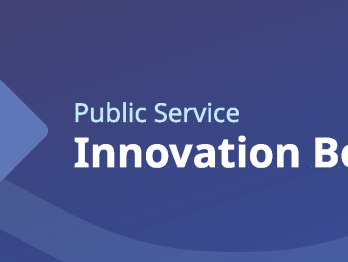The Devious Dozen: 12 fallacies behind innovation lab “failures”

Times are tough. Governments across the globe need to find ways to keep up with ever-faster changing times, move beyond the constraints of traditional approaches, and leverage innovation to improve public policies and services. One way many governments have sought to advance innovation was by establishing public sector innovation labs over the past 20 years or so. In our first post we outlined the main purposes and learnings of public innovation labs. In this post, we will share reasons why many labs have failed and, presumably, a good number will fail.
Our analysis is founded on a review and the insights gathered from a public innovation lab directory covering 137 cases from 37 countries and four international organisations, along with our own direct experiences and conversations with many public sector innovators. This blog also reflects an extensive literature review of research on public innovation lab experiences across the globe.
The debate on the failure of public sector innovation labs is not new; much has been written about the rise and downfall of labs. Not every end of a lab means failure, some might transform into new units or leave institutional and cultural legacies as planned, while others might evolve in specialised innovation and tech units. Apparent failures are extremely important occasions to correct biases and pre-assumptions, embed learnings, strengthen existing approaches, and adjust the planned trajectories for lab design and delivery. What this blog seeks to bring to the discourse is the link to practical examples of teams that somewhat successfully navigated common pitfalls.
We clustered the 12 reasons why public sector labs fail into four types of challenges, which are all intertwined. Often these failures appear as fallacies and traps disguised under good intentions and splendid prospects. These fallacies are neither inevitable nor unsolvable. For that motive, we shared concrete examples on approaches that innovation labs around the world have been using to prevent or counteract potential nefarious consequences.
The adoption challenge
Government labs usually seek to drive institutional reforms. To first test new ways of working, including the use of emerging technologies and digital solutions, and to then drive the institutionalisation of what has proven to be of comparative advantage. We mention this challenge first as it is most directly related to the notion of a life cycle of either the lab itself or of a specific focus of a lab, such as work with specific approaches or technologies. Some approaches or solutions that a lab seeks to test and mainstream might end up as a new tool in a government’s toolbox, provided the teams pay attention to:
- The ‘show, don’t collaborate’ fallacy. Most labs are under pressure to deliver. This often translates in a focus on hands-on projects that are initiated and managed by the lab team itself. Such demonstrator projects are usually important, but only as part of a well-balanced portfolio that deliberately wages the trade-offs between going faster alone and working with other parts of the organisation. The same pressure to deliver may explain why there are teams that fall in love with the solution, not the problem: too much emphasis in solutions can deviate the attention from the needs of users, be them citizens, companies or public servants. After all, innovation labs are all about learning new moves, not just trying to improve old routines. The Public Policy Lab New York, for example, partners by default with government agencies and service providers to support the re-design of public services. The team complements working with elected officials and service providers by bringing in citizens, particularly people with limited access to basic needs and persons not well represented in positions of power. The Centre for Public Service Innovation South Africa also works in partnerships by default to support government entities redesigning public services.
- The ‘first we must change mindsets’ fallacy. It will be hard to find anyone disagreeing with the importance of changing mindsets as part of a larger organisational change effort. But there are at least two major problems with making this explicit in a prominent way. Firstly, we kindly ask the reader how she would feel if someone approached her, telling her straight-up that she needs to change her mindset. Our assumption: not all that open. Reactance is a well-established concept, and it is surprising how many labs make the mindset-change point a key feature in their communications. Here, it should be ‘show, don’t tell’. GNova from Brazil has created CoLabs, an acceleration and mentorship programme to speed up and steward innovation labs teams, enabling a peer-to-peer learning process across participating teams and the re-use of the long experience gathered in the last years. Secondly, a focus on mindsets suggests that individual decisions can result in transformative change within public sector institutions. The explicit and informal rules and norms, along with incentive systems and other components of organisational cultures, however, shape behaviours and in turn mindsets. Additionally, “there is a tension between the ideas of public innovation and the hegemonic political-economic context in which the labs were created. Operating within a model based on rational and pragmatic choices, they risk preserving rather than challenging historical conditions that perpetuate structural problems. This is especially true regarding issues such as racism and social inequality”, as Eduardo Staszowski writes in the excellent book “Life Cycles of Innovation Labs”.
- The ‘cool kids club’ fallacy. This goes beyond bean bags and setting up shop in a remote or wildly differently looking environment. This fallacy also influences hiring decisions: to bring new expertise and dynamism, outside innovators are often brought in. But it is not likely that newcomers with little clout and experience in the mothership will successfully challenge and change the ways of working of public sector veterans. All too often, these newcomers are also insufficiently prepared for the long, cumbersome processes and slow pace of affecting change. The lesson is not to avoid bringing in outside expertise alone, but to balance the team well with those who know the organisation, who are well-connected and like and want to work on organisational change, and the newcomers. Lastly, most innovation labs and practices establish communities, including staff members who are not part of the immediate team. While this is great, a small number has created a counter-productive ‘you are either in, or you are out of the inner circle’ dynamic. Being part of the inner circle of lead innovators and opinion leaders can be highly motivating for those who are ‘let in’ but seriously alienating for those who seek to affect meaningful change and who are constantly sidelined. The LabX team is made up of members recruited from externally, who could bring different perspectives and naturally question the status quo, as well as of public officials with long careers who impersonate the values of public service. This combination enables the team to navigate the intricacies of public administration, and ensure that the lab was empathetic to public officials’ challenges and aspirations.
The demonstration challenge
Innovation in the context of public sector reforms and social impact is foremost a process with distinct characteristics. There is not the one innovation process, and there is a real need to showcase different ways how innovation can unfold, beyond the usual Silicon Valley narratives and methodologies. What seems to be true for public sector labs across the world, though, is that the diverse processes of innovation are better to be approached with rigor and intent. A ‘carte blanche’ to innovate can result in a lack of focus related to the envisaged outcomes, the areas of work and the processes itself. Innovation is not an end in itself; it needs structure and direction.
- The ‘low hanging fruit’ fallacy. The need to feature first results quickly as a mean to prove its own value, pressure from (political) sponsors of a lab, and the multitude of urgent needs of citizens all too often result in a focus on work that can yield tangible effects in a short timeframe. Planning for outcomes that can be achieved in a relatively short-time frame is of course not negative per se. But a lab should have a well-balanced portfolio also in this regard. Most change processes take time, for innovations to scale, it is reasonable to calculate a time period of ten to twelve years. Such time horizons are realistically beyond the life cycle of a lab and teams need to plan from the get-go how to go about referrals. When the Access to Information lab (a2i) in Bangladesh was created in 2008, the team pursued a combination of nurturing bottom-up innovation and securing top-down support for required policy changes, particularly to help scale viable solutions. There was clear pressure to demonstrate results quickly and the team wisely focused on shorter-term wins such as engaging civil servants in innovation and empathy training to then co-develop new solutions for public service delivery, while formulating a key north star for its work in the medium- and long-term: to reduce the time, cost and number of visits required by citizens to access services. Since its inception, this combination has saved citizens more than $30 billion, nearly 20 billion workdays, and 13 billion visits in the last decade alone due to the more efficient delivery of public services. Now, it has transformed into the innovation agency’s Aspire to Innovate Programme.
- The ‘someone, anyone will pick it up’ fallacy. Every team that works on an innovation that pursues public and social impact needs to ask themselves: ‘what is our vision for lasting and inclusive impact? How will the solution be unfolding impact in ten years? Who will implement this, how will it be funded: what is the business model?’ All too often, innovators and their funders make the false assumption that the innovations or projects they support will grow organically because someone, anyone, will pick them up and run with them. This is accompanied by the ‘the next big idea’ dynamic, which leads to pursuing one-off projects for a limited duration, leaving innovations stranded for lack of a longer-term vision and adequate capacity and resources for sustainable scaling. The 27eme Region in France has envisioned ways to support replication and diffusion through the combination of strategies to scale deep, scale out, scale up, scale across, scale together, or scale by mixing.
- The ‘build it and they will come’ fallacy. In cases where labs are able to demonstrate the comparative advantage of doing business differently, many resort to creating toolkits to enable everyone to build on their experiences. Capacity-building interventions, including trainings and toolkits, can play a positive role in providing staff and partners with the capabilities to innovate, but this usually remains an isolated work across islands of excellence. Successful labs focus on embedding guidance on how to do things differently in the prescriptive content of their organisation; the rules and regulation of how work is done. The Government Innovation Lab in Chile has expanded its approach, from providing consultancy services across government and training partners in innovation methods, to embedding guidance on well-tested methods for co-design, prototyping and experimentation in official regulation.
The political capture challenge
Labs need political support and cover; they need funding and sponsors. Yet, if the survival of the innovation lab depends on mainly political patronage the end is usually near.
- The ‘we have a senior sponsor’ fallacy. Lab teams often rely too heavily on one senior sponsor, be it a political appointee or a senior civil servant. In light of election cycles and staff movements, such sponsorship can vanish rapidly – or can create the impression that labs are ‘pet projects’ inscribed on individual agendas. Successful teams often invest in relationship management tactics and secure the support of diverse senior sponsors, create strong institutional regulations (e.g. government order), or embed the lab in the workings of “neutral” public agencies and bodies that provide clarity of purpose, sustainability across time, and transparent obligations and rights to their functioning routines. The LabHacker in Brazil has found its place in the Chamber of Deputies, creating initiatives that engage lawmakers from all the political spectrum, citizens and public officials from across Government.
- The ‘running without moving’ fallacy. Labs have to make tough decisions on which challenges they focus their often-strained resources on. If the areas of focus correspond mainly with the pet project areas of government programmes or strategies, there is a massive risk of a sudden stop to these activities in case of a change in political leadership. Labs get captured by administrative procedures and daily operations inside the organization. Other times, teams get stuck in a technical area or approach by their own will, acting out of methodological stubbornness and without considering alternative paths or, at least, updating their activities and strategies in accordance with the changes in the environment. Successful labs are able to navigate such political agenda-setting pressures and prioritise areas that are likely to have sustained focus. The Australian Centre for Social Innovation (TACSI) has stated publicly its strategy for the period 2022 to 2027 to make innovation go ‘from the margins to the mainstream.’ The strategy was motivated by the need to take stock of the impacts of the COVID-19 years and leverage those learnings to leverage an adapted approach to the future.
- The ‘where we are matters most’ fallacy. This might not be only related to pressure from political sponsors, but in some cases it is. If a lab has a national remit, it needs to decide where to put its main activities. Successful lab teams venture out of the capital, they engage public servants and citizens in the periphery. Not that the same lab needs to be all over the place. Labs benefit however from adopting distributed approaches to ensure that different regions, ecosystem segments and communities find a way to express their challenges and ambitions. Networks of labs, coordinated jointly or by a specific curator, can be very helpful in this regard. Peru’s National Network of Innovation Labs gathers more than a hundred public sector labs, private sector labs, academic labs and civil society labs, sharing good practices and enabling meaningful conversations that spread across barriers. The coordination of the network is place at the centre of Government, giving it a vantage point from where to encompass all sectors of public administration.
The communications challenge
In most public sector organisations, including in those where senior leadership promotes innovation actively, there is a lack of clarity on innovation: why, what exactly is expected of me, and how can I innovate? People working in the public and development sectors usually are quite intrinsically motivated to achieve results, to make a difference. And they are usually over-worked, have little time and a number of requirements to consider, such as to ensure social inclusivity and environmental sustainability of their activities. Hence, it is crucial to establish clarity on how people in different functions can put innovation into practice.
- The ‘value proposition narrative’ challenge. A number of labs communicate quite well what they do to the general public. A necessary ingredient to do so are clear and compelling indicators that measure progress and success at different stages of an innovation journey. There are some labs that have developed strong indicators and that are constantly working on evolving their Monitoring, Evaluation and Learning (MEL) approaches. Even fewer, however, invest in developing value narratives for internal audiences, targeting public servants and key implementers, disaggregated based on key job functions. If there is a call to innovate from senior leadership, and the lab provides operational support, what does this mean to staff working on issues such as social service delivery, transportation logistics or IT? Is the expectation to pursue small incremental improvements or to test radically new ways? Or perhaps to source innovations from other players? People who are willing to change need clarity. And nothing seems quite so useless than asking them ‘to think outside the box’, rather than actually delivering concrete support for realistic innovation options for their respective functions. An example of this is the Staatslabor from Switzerland which has an Innovation Fellowship Programme that gives team access to 12-month support by fellow and occasion to pilot its innovative approaches.
- The ‘always-starting-something-new-team’ fallacy. All too often labs fall prey to the well-know hype-cycles of a specific technology or approach. More and more teams understand this and design a portfolio that entails some work whatever is on the radar of senior sponsors, and other longer-term and more strategic work. But many communicate too heavily about work that creates the most energy: new initiatives. What might look like a dynamic venture for a while, appears as a team that does not follow-through in the medium-term. If there are no updates on the exciting initiatives that were launched one, two or three years ago, the lab’s audience will start to assume that they either died a quiet death or that a more serious team eventually took over. The 18F in the United States provides tailored support to public agencies and ensures challenge-based approaches. However, it has a clear focus where it can bring value and a very well-defined scope of interventions.
- The ‘closing a lab means failure’ fallacy. Some labs set out to foster problem-oriented, context-sensitive approaches or to demonstrate value of a specific approach such as behavioural insights or building institutional capabilities. Others are designed to pursue higher-level objectives such as to facilitate co-creation, inclusiveness, and participation. A number of labs with rather specific purposes have achieved large parts of their objectives and subsequently closed down but failed to communicate this properly. Not every end is a testament of failure, just like not every renewed investment reflects solid work. The Service Innovation Lab from New Zealand has been designed as an experimental approach itself, closed in 2020, concludes that ‘its biggest lesson from everything that went well, was that this happened when effort was focused right at the start on establishing enduring relationships and then building trust.’ For that reason, its website remains open, with materials still available to everyone.
What fallacies did we miss? We are seeking your inputs and your experiences as we expand our perspective of public innovation labs. Please share your contributions in this short questionnaire.
We want to thank to all the innovation labs’ colleagues that shared with us, either in informal conversation or even through written comments, conversations and insights that led to this blog: Frederic Baervoets, Camila Medeiros, Marjana Dermlj, Rui Martinho, Dora Silva, Lukas Kastner, Larisa Panait, Anca Paiusescu, Evija Taurene, Amélie Durozoy, Lea Boissonade, Fiorella Zavala, Almendra Orbegoso, Orlando Rojas, Catalina Gutierrez, Pablo Pascale and Mariana Romiti. We tried to build on top of this collective intelligence, but all the views expressed in this blog and, obviously, its shortcomings are the authors’ sole responsibility.
This blog is funded by the European Union. Its contents are the sole responsibility of the authors and do not necessarily reflect the views of the European Union.











